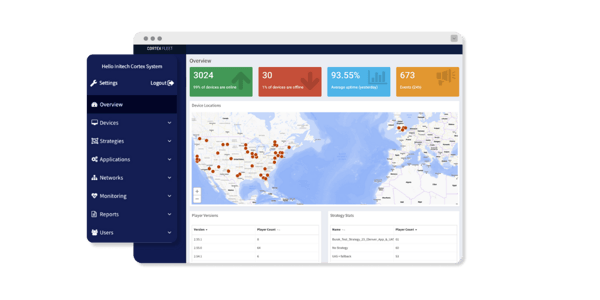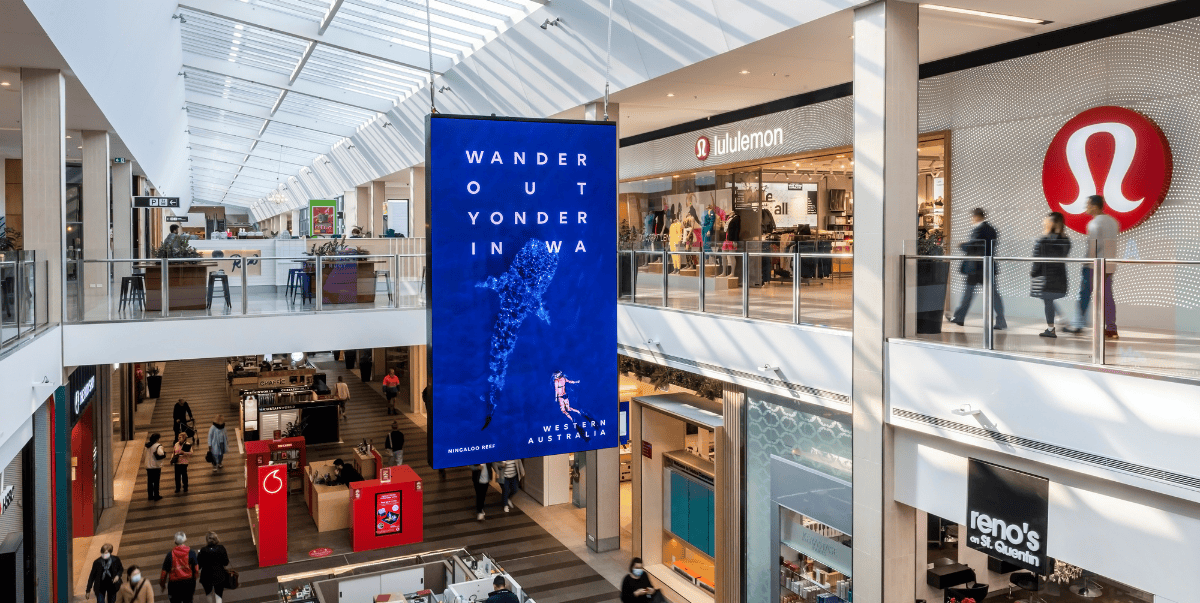
Imagine a bustling city with vibrant streets and towering skyscrapers. As you go about your day, you come across dozens of digital advertising screens, both big and small, that lure you in with stunning creatives and relevant messages — that is a digital signage advertising network.
But how does the right message end up on the right screen at the right moment? In this blog, we’re pulling back the curtain on how these networks operate, the technology you need and how to maximize your operations for the best returns.
What is a digital signage advertising network?
A digital signage ad network capitalizes on the visual real estate of screens that appear all around us. It does more than display information; it's a revenue-generating powerhouse. But how does monetizing digital signage work? By opening the network up to advertising, transforming your screens into lucrative marketing spaces.
Let's consider a retail brand looking at using a digital signage network. By displaying their ads on your screens, they inform customers about their latest discounts and give you a piece of the advertising pie (a multi-billion dollar industry). This synergy creates a win-win situation — the retail brand generates additional revenue from advertising while you — the media owner — generate additional revenue thanks to your network’s access to a captivated audience.
A digital advertising network can be made up of any screen that is outside of a personal device, including those alongside highways, on urban streets, at gas stations, in retail and grocery stores and so many more.
Defining a network’s money-makers: Three types of DOOH advertising
Turning digital signage network solutions into an advertising network means you’ve entered the world of digital out-of-home (DOOH) advertising. DOOH transforms static billboards and urban spaces into dynamic canvases, bringing brand identities to life with captivating digital media content.
Within this world, there are three types of DOOH advertising network strategies that you can apply to your network:
- Programmatic advertising: An automated, data-driven approach to buying and optimizing digital ad placements in real-time. Programmatic advertising can connect you to thousands of marketers at once.
- Fixed schedule advertising: Ads that display at a predetermined time that you’ve agreed on directly with a marketer.
- Loop-based advertising: Ad sequences designed to play in a continuous loop. Loop-based advertising allows you to plug in viewing times dedicated to a fixed or programmatic placement.
What do you need to operate a digital signage advertising network?
The secret to successful digital signage network technology is its tech stack. It’s the foundation that makes an advertising network possible. You’ll need three main digital signage network software pieces: An SSP, an ad server, and a content management system (CMS).
#1: A supply-side platform
SSPs bring automation to physical ad spaces for media owners to manage out-of-home (OOH) inventory efficiently, turning digital screens for advertising into big marketing moments. It connects your network with buyers and makes your screens available for programmatic advertising through the open exchange or private marketplace (PMP).
An open exchange is like an online marketplace where marketers and media owners come together to programmatically buy and sell ad space. The process is often automated and happens in real-time. Marketers bid for ad placements, and the highest bidder gets their ad displayed to the audience on the media owner’s network.
PMP advertising is like a members-only section for digital ads. Instead of being open to everyone, it's a more exclusive space where advertisers and media owners make special arrangements. Think of it as a more controlled environment, where everyone has visibility into the exact screens where an advertisement is being served.
There are three ways to sell programmatic ads on your network:
- Passive approach: Plug in your inventory and see what revenue you can generate purely by making it available.
- Programmatic specialists: Have one or two dedicated programmatic specialists in-house that optimize your programmatic strategy.
- Full team alignment: Have every seller sell both direct and programmatic ad space.

#2: An ad server
An ad server allows you to manage all DOOH campaigns, including those sold based on share of voice, hourly frequency, or run-of-network. These are your loop-based and fixed ads. These are different from programmatic advertising because marketers will come directly to you to buy the ad space. It’s a more traditional approach to monetizing your network.
Having a mix of different advertising methods on your network creates a balanced and effective strategy. Digital screen ads booked directly with a marketer fosters closer relationships, customization, and premium inventory access. While programmatic advertising opens your network up to dynamic targeting, and data-driven decision-making, enhancing scalability and reach. The combination of both approaches ultimately maximizes the performance and profitability of your digital signage network.
(Pro Tip: Vistar Media’s Unified Ad Server is the first ad server that supports both loop-based and programmatic ad scheduling - a single solution to automate manual tasks and increase inventory value)

#3: A Content Management System (CMS)
The final piece of software cannot afford to be overlooked — onboarding a CMS to keep your network running smoothly. Serving content on your network means nothing if your LED outdoor advertising screens are malfunctioning. Without a proper means of digital signage network management, you have virtually no insight into whether your screens are working or not. By logging into a web-based CMS, you can control exactly what is showing up on what screen while also troubleshooting any issues as they come up.
While a CMS isn’t a money-maker on its own, it’s a non-negotiable if you want to keep your advertising display screens and your business running at its full potential. It’s essential to choose one specifically crafted for the nuances of digital out-of-home (DOOH).
Maximize your digital signage advertising revenue
Advertising across digital signage has huge potential for both media owners and marketers. As we've explored the ins and outs of these networks, it's evident that the key to success lies in understanding and leveraging the right technology.
As tech becomes more and more innovative, embracing the right tools can increase the profitability of digital signage networks with every ad served. As you navigate the out-of-home industry, remember that behind every captivating message is a well-designed digital signage network making it possible.
Interested in learning more? Meet with one of our team members to get a free demo of all the best digital signage advertising network solutions.




